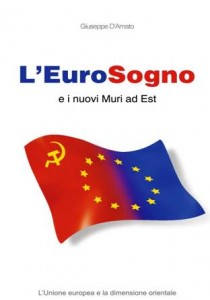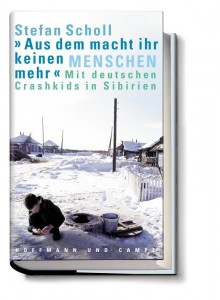The Baltic, the new EU members and the fears for the budget 2014-2020.
25 Oct 2011 “Over the last 7 years (2007-13) only through the EU Cohesion Funds (the biggest in the EU’s regional assistance) the member states are supposed to receive about € 350bn attributed to more than 450 national and regional projects in the 27 member states. 
For example, in the Baltic States, Latvia will get € 4,6bn, Lithuania – € 6,9bn and Estonia – € 3,4bn; just to compare, Poland has got already € 67bn of the EU development grants since it joined the EU in 2004…
Over the next 18 months, the EU-27 governments will decide on the block’s next “financial programming” for 2014-20 with a total expenditures at the level of 1 trillion Euros… According to the Commission’s proposal published at the end of June 2011, the spending figures are the following (out of total € 1,025bn for the whole 2014-20 period) in %:
Economic growth & cohesion – 48;
Common agricultural policy – 27,5;
Other natural resources spending – 10;
Global action – 6,8;
Administration – 6,1;
Security & citizenship – 1,8.
Main contributors to the EU budget are known well: Germany, France, Italy, Sweden, the Netherlands, the UK and Denmark, which “donate” the lion share of the EU-27 budget. The main recipients are well known too: Poland, Greece, Belgium, Hungary, Portugal and the three Baltic States, though in much less degree…
The new EU member states from Eastern Europe are afraid that “milking the EU budget” through cohesion funds would come to an end. The Commission authorities argued that these worries were groundless: in the budget proposal the cohesion funds equal 37 per cent of the total budget (which is actually 2 per cent more that in the previous budget term).
However, some say, there are some grounds for assistance’s reduction, e.g. in the cohesion fund a new line of expenses is envisages, so–called “connectivity fund” of about € 40bn aimed to build cross-border infrastructure projects. In fact, these projects include high-speed railways and pipeline connections which might be of a primary benefit for the rich member states.
Besides some proposed changes in the eligibility rules for various EU funds would make in more difficult for poorer states to get financial support.
According to a Polish study, wealthy states can benefit from cohesion funds for the Eastern members: each euro in cohesion financing in Poland gives 36 cents to the richer states in the form of additional demand for goods and services. (Financial Times, 22 August 2011, p.5)…”
Article – Eugene Eteris – The Baltic Course.
Comment Form
Welcome
We are a group of long experienced European journalists and intellectuals interested in international politics and culture. We would like to exchange our opinion on new Europe and Russia.
Categories
- Breaking News (11)
- CIS (129)
- Climate (2)
- Energy&Economy (115)
- EU Eastern Dimension (85)
- Euro 2012 – Sochi 2014 – World Cup 2018, Sport (43)
- Euro-Integration (135)
- History Culture (198)
- International Policy (261)
- Military (74)
- Interviews (18)
- Italy – Italia – Suisse (47)
- Odd Enough (10)
- Poland and Baltic States (126)
- Religion (31)
- Russia (421)
- Survey (4)
- Turning points (4)
- Ukraine (176)
- Российские страницы (113)
Archives
- November 2020
- October 2020
- September 2020
- August 2020
- July 2020
- May 2020
- April 2020
- March 2020
- January 2020
- December 2019
- November 2019
- October 2019
- September 2019
- August 2019
- July 2019
- June 2019
- May 2019
- April 2019
- March 2019
- February 2019
- December 2018
- November 2018
- October 2018
- September 2018
- August 2018
- July 2018
- June 2018
- May 2018
- April 2018
- March 2018
- February 2018
- January 2018
- December 2017
- November 2017
- October 2017
- September 2017
- August 2017
- July 2017
- May 2017
- March 2017
- January 2017
- December 2016
- November 2016
- October 2016
- September 2016
- July 2016
- June 2016
- May 2016
- April 2016
- February 2016
- January 2016
- November 2015
- October 2015
- September 2015
- June 2015
- April 2015
- March 2015
- February 2015
- January 2015
- December 2014
- November 2014
- October 2014
- September 2014
- August 2014
- July 2014
- June 2014
- May 2014
- April 2014
- March 2014
- February 2014
- January 2014
- December 2013
- November 2013
- October 2013
- September 2013
- August 2013
- July 2013
- June 2013
- May 2013
- April 2013
- March 2013
- February 2013
- January 2013
- December 2012
- November 2012
- October 2012
- September 2012
- August 2012
- July 2012
- June 2012
- May 2012
- April 2012
- March 2012
- February 2012
- January 2012
- December 2011
- November 2011
- October 2011
- September 2011
- August 2011
- July 2011
- June 2011
- May 2011
- April 2011
- March 2011
- February 2011
- January 2011
- December 2010
- November 2010
- October 2010
- September 2010
- August 2010
- July 2010
- June 2010
- May 2010
- April 2010
- March 2010
- February 2010
- January 2010
- December 2009
- November 2009
- October 2009
- September 2009
- August 2009
Our books




